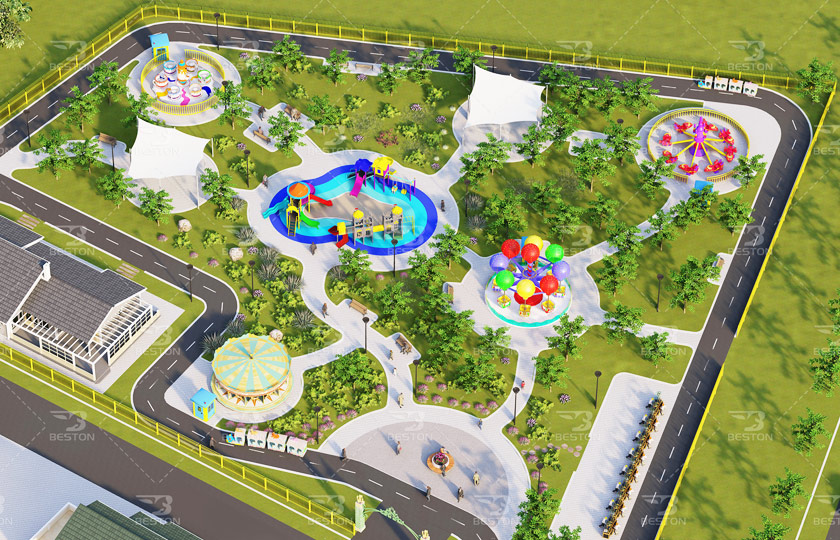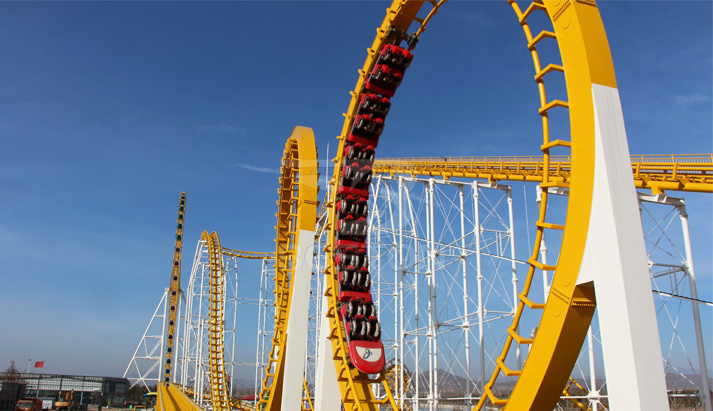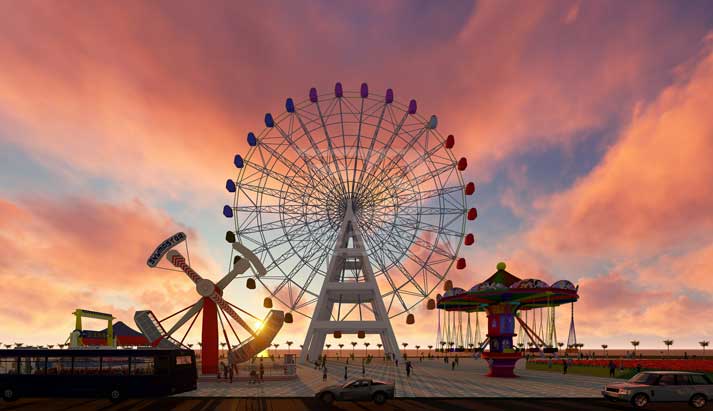Building an amusement park is a dream for many entrepreneurs and entertainment enthusiasts. The process of creating a successful park requires careful planning, attention to detail, and a commitment to safety and quality. Here are some steps to consider when building an amusement park:
Determine the Theme of Your Park
The theme of your amusement park is crucial to attracting visitors and creating a memorable experience. A well-defined theme helps guide the selection of amusement park rides, attractions, and decor. A park that caters to a specific interest or age group will create a more targeted and cohesive experience. Themes could range from thrill rides and roller coasters to water parks and animal exhibits. By having a clear theme, you can create a unique experience that sets your park apart from others.
Select a Suitable Location
When selecting a location for your amusement park, consider accessibility, traffic flow, and visibility. Ideally, your park should be located in a high-traffic area, close to public transportation, and easy to access by car. The park should also be located in an area that is attractive to families and tourists. Consider partnering with other nearby attractions to create a destination experience.
Obtain Necessary Permits and Licenses
Before breaking ground on your park, you will need to obtain the necessary permits and licenses from local and state governments. The requirements for permits and licenses vary by location and can include zoning permits, building permits, and operating licenses. It is important to understand the requirements for each type of permit and license and to secure them before beginning construction.
Develop a Business Plan
A business plan is an essential part of building an amusement park. It should include financial projections, marketing strategies, and a detailed description of the park’s layout and features. A business plan helps you identify potential obstacles and develop strategies to overcome them. It also provides a framework for decision-making and serves as a roadmap for achieving your goals.

Hire a Team of Professionals
Building an amusement park requires a team of professionals with expertise in design, construction, and operations. You will need to hire architects, engineers, and contractors to design and build the park’s infrastructure. You will also need to hire ride manufacturers and installers to build and install the park’s rides and attractions. Finally, you will need to hire staff such as ride operators, ticket sellers, and maintenance workers to run the park.
Design the Park Layout
The layout of your amusement park should be designed to maximize space and create a smooth flow of visitors throughout the park. Consider factors such as traffic flow, ride placement, and guest amenities when designing the park’s layout. A well-designed park will create a seamless guest experience and increase the park’s capacity.
Choose Rides and Attractions
Selecting the right rides and attractions is critical to the success of your amusement park. Consider factors such as safety, capacity, and maintenance requirements when choosing rides. The rides and attractions should be selected to cater to a range of ages and interests. A variety of rides, from thrill rides to family-friendly attractions and indoor amusement rides (https://bestonamusementrides.com/indoor-amusement-rides-for-sale/) will ensure that there is something for everyone in your park.

Build the Park Infrastructure
The infrastructure of your amusement park includes everything from walkways and landscaping to restrooms and food stands. It is important to build the necessary infrastructure to create a comfortable and enjoyable experience for guests. Consider factors such as accessibility, aesthetics, and guest flow when building the park’s infrastructure.
Install Rides and Attractions
Installing the rides and attractions requires coordination between the ride manufacturers, installers, and park staff. Each ride and attraction must be installed according to its design specifications and safety requirements. A thorough inspection and testing process is essential to ensure that each ride and attraction is safe and functional.
Test the Rides and Attractions
Before opening the park to the public, it is essential to test each ride and attraction thoroughly to ensure they are safe and functioning correctly. This testing process should include a series of trials, inspections, and simulations. Additionally, it is essential to train staff on how to operate and maintain each ride and attraction properly.
Market the Amusement Park
Marketing your amusement park is crucial to attracting visitors and generating revenue. It is essential to develop a marketing strategy that targets your intended audience and highlights the unique features of your park. A strong online presence, advertising, and promotions can help build awareness and attract visitors to your park.
Train Staff
Training staff is critical to the safe and efficient operation of your amusement park. Staff should be trained on safety procedures, ride operation, customer service, and maintenance. Ongoing training and development can help improve the guest experience and increase staff morale.
Open the Amusement Park
Finally, it’s time to open your amusement park to the public. A successful launch requires proper staffing, crowd control, and safety protocols. It’s essential to monitor operations closely during the initial opening period to identify and resolve any issues quickly.
In conclusion, building an amusement park is a complex process that requires careful planning, attention to detail, and a commitment to safety and quality. By following these steps, you can create a unique and memorable experience that attracts visitors and generates revenue. With the right team, resources, and mindset, building an amusement park can be a rewarding and fulfilling endeavor.

